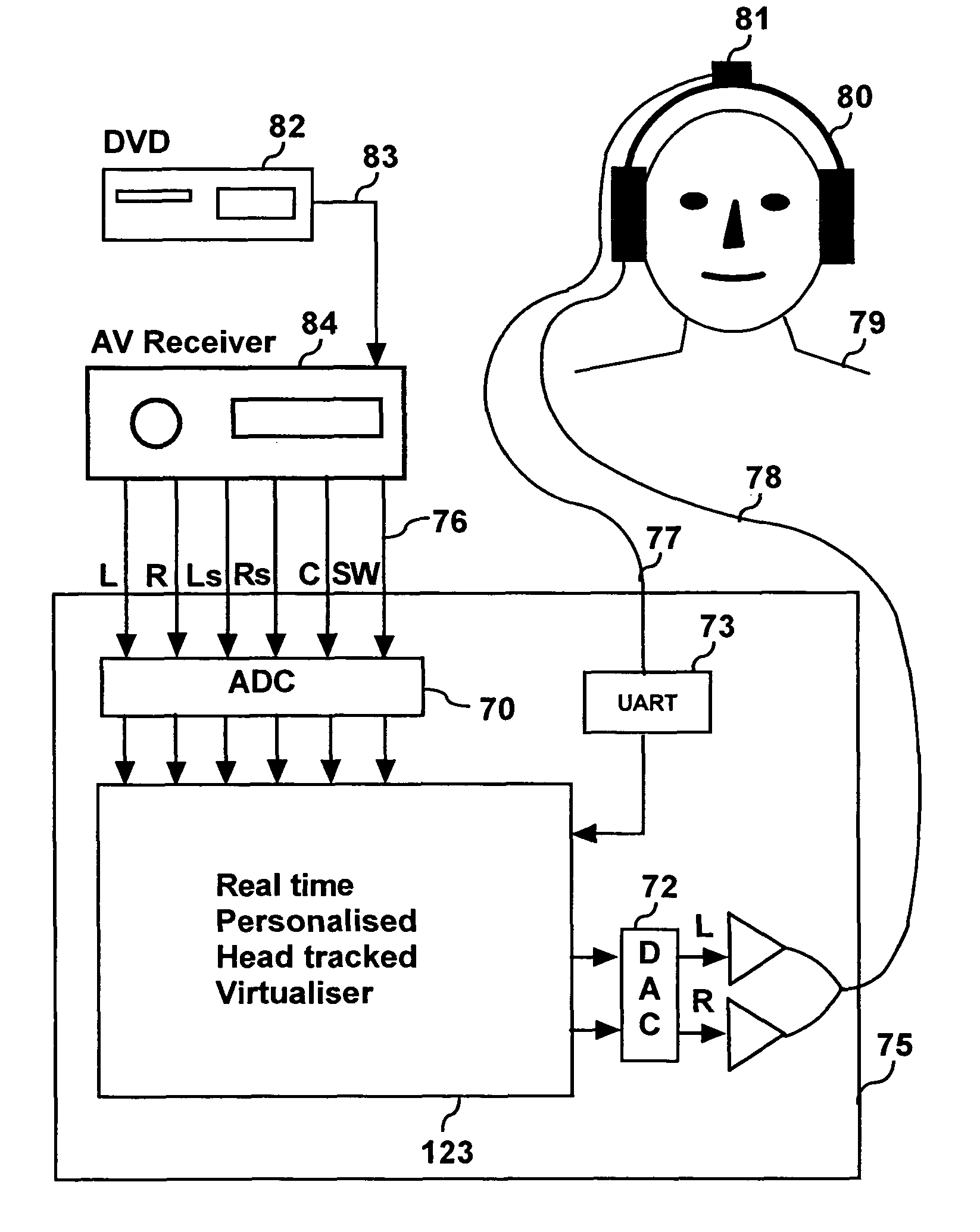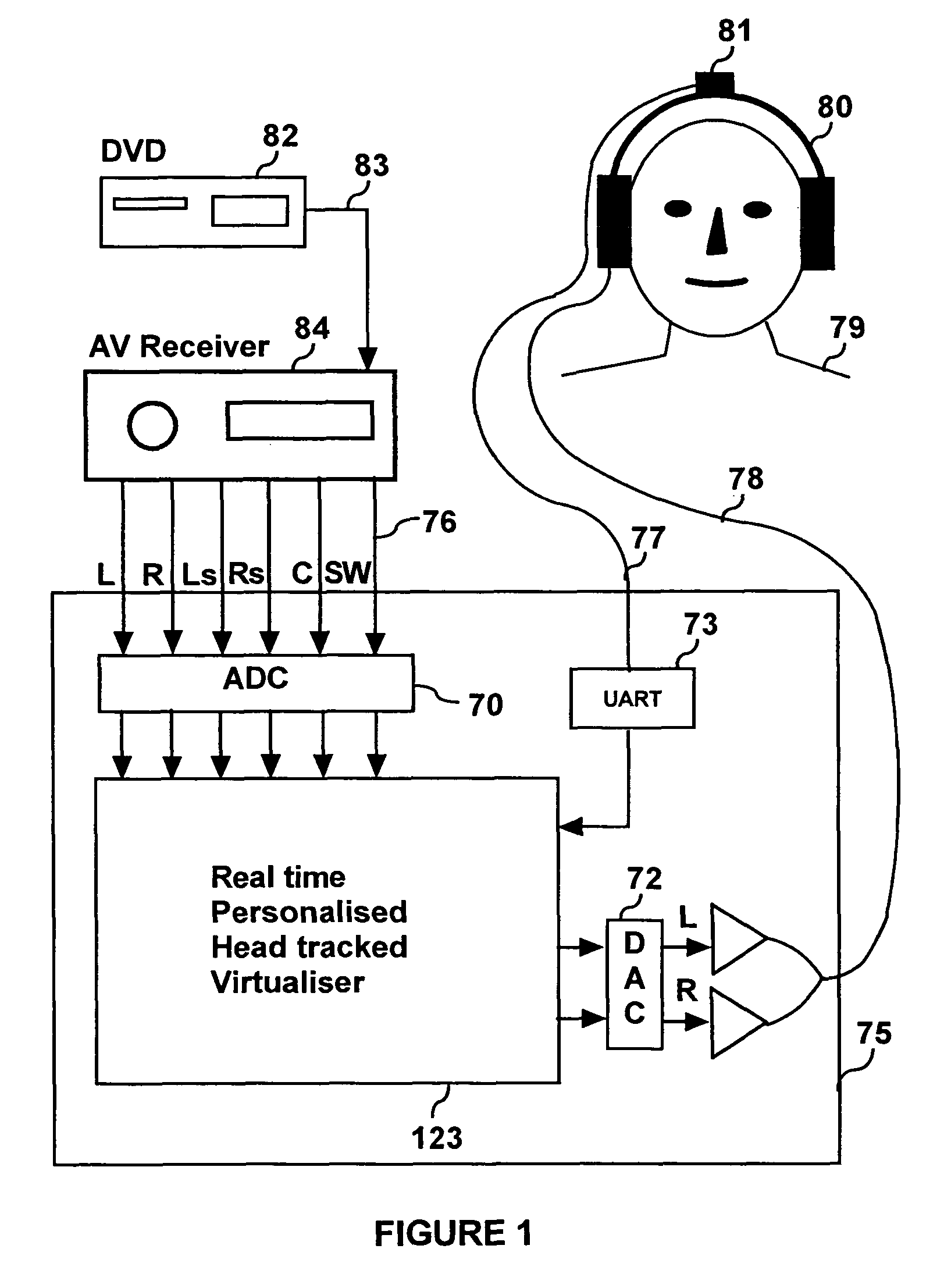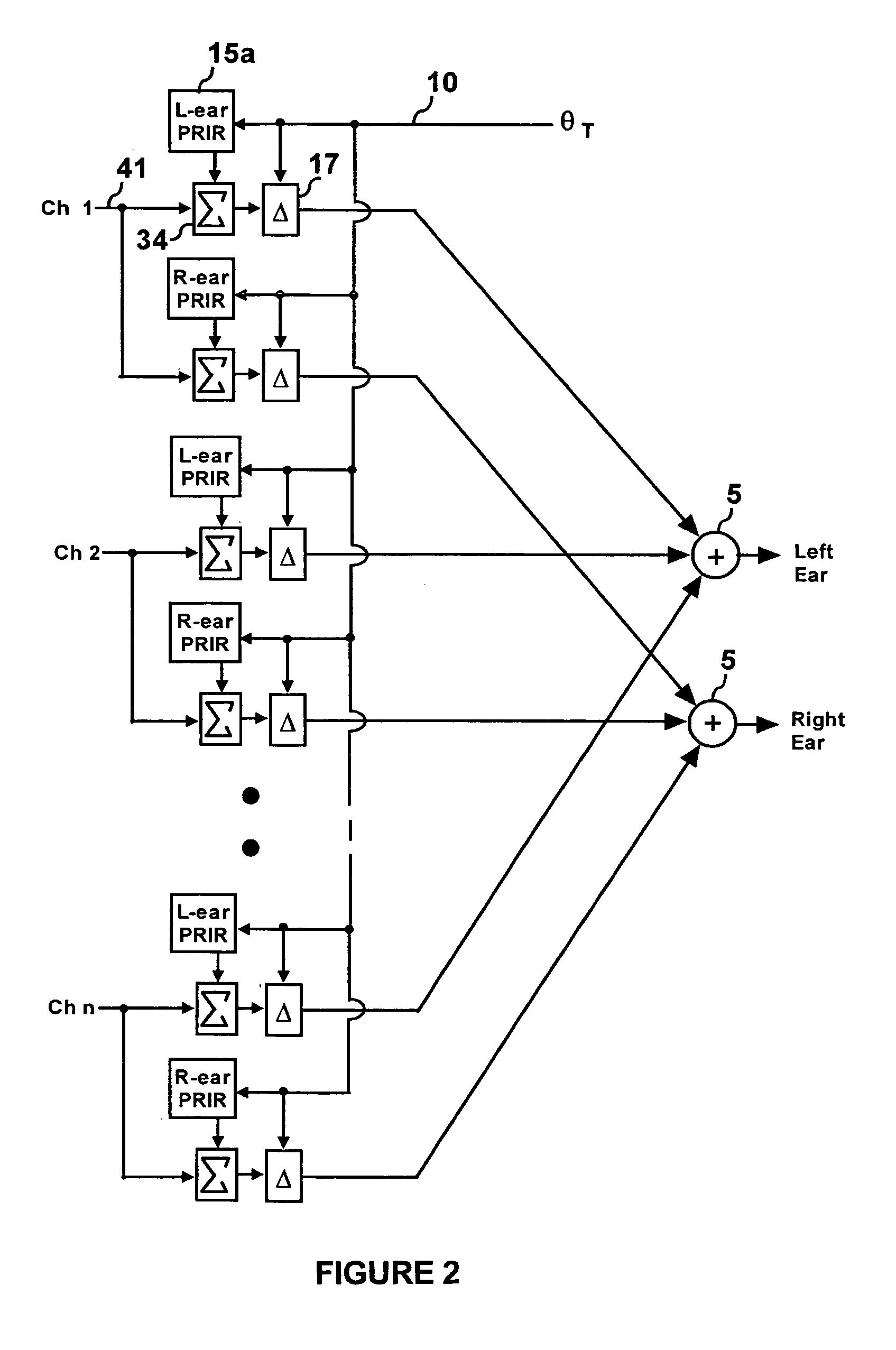Personalized headphone virtualization
a virtualization and headphone technology, applied in the field of three-dimensional audio reproduction, can solve the problems of difficult to maintain the illusion of simple personalized virtual sound sources in the presence of head movements, the individual will have considerable difficulty in distinguishing between virtual and real sound sources, and the method and apparatus of such implementations are generally not applicable to digital signal processing (dsp) type implementations, etc., to improve the accuracy of impulse response measurement, sound quality, and optimize the effect of convolution computational load
- Summary
- Abstract
- Description
- Claims
- Application Information
AI Technical Summary
Benefits of technology
Problems solved by technology
Method used
Image
Examples
Embodiment Construction
Personalized Head Tracked Virtualization Using Headphones
[0078]A typical application of the personalized head tracked virtualizer method disclosed herein is illustrated in FIG. 1. In this illustration a listener is watching a movie but rather than listening to the movie sound track over their loudspeakers they instead listen to a virtual version of the loudspeaker sounds through the headphones. A DVD player 82 outputs in real-time an encoded (for example Dolby Digital, DTS, MEPG) multi-channel movie sound track via an S / PDIF serial interface 83 while playing a movie disc. The bit-stream is decoded by an Audio / Video (AV) Receiver 84 and the individual analogue audio tracks (Left, Right, Left Surround, Right Surround, Center and Sub-Woofer loudspeaker channels) are output via the pre-amplifier outputs 76 and input to the headphone virtualizer 75. The analogue input channels are digitized 70 and the digital audio is fed to the real-time personalized head tracked virtualizer core proces...
PUM
 Login to View More
Login to View More Abstract
Description
Claims
Application Information
 Login to View More
Login to View More - R&D
- Intellectual Property
- Life Sciences
- Materials
- Tech Scout
- Unparalleled Data Quality
- Higher Quality Content
- 60% Fewer Hallucinations
Browse by: Latest US Patents, China's latest patents, Technical Efficacy Thesaurus, Application Domain, Technology Topic, Popular Technical Reports.
© 2025 PatSnap. All rights reserved.Legal|Privacy policy|Modern Slavery Act Transparency Statement|Sitemap|About US| Contact US: help@patsnap.com



